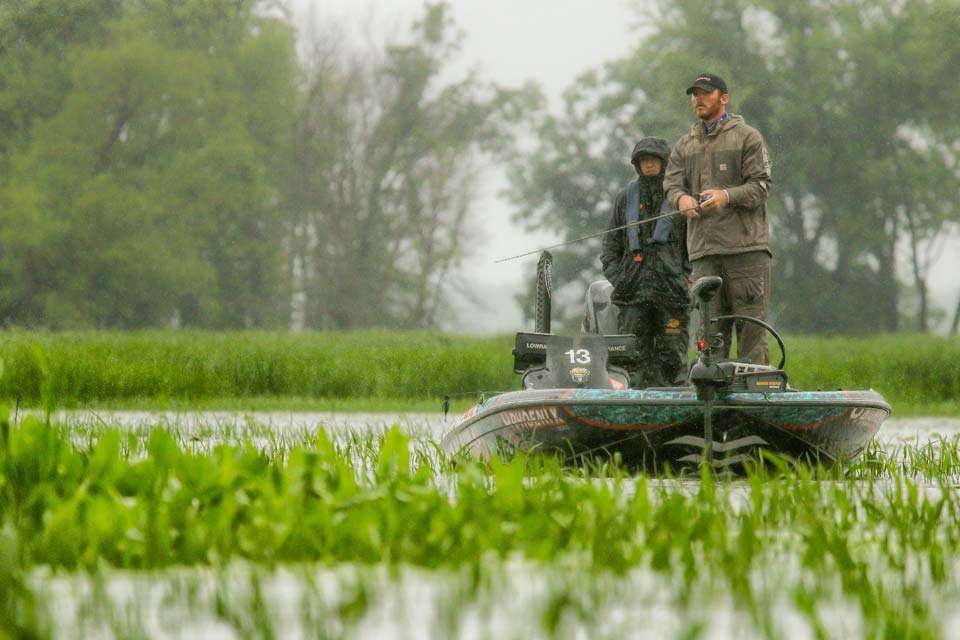
LA CROSSE, Wis. — If there is a lesson to be learned this week, it will be how to successfully catch bass on a river that is nearing flood stage. Such are the conditions in play for the 107 pros at the Bassmaster Elite at Mississippi River presented by Go RVing.
As of Thursday the river stage was 9 feet and is expected continue rising through Championship Sunday. By then, the level could reach 12 feet with flood stage only 1 foot more.
The good news is the water in this stretch of river runs clearer, even near flood stage. The clear running tributaries draining into the river are the reason why. Current speed is the tradeoff. The river is narrower. When the water goes up it also runs faster.
That makes the rising water, and how to deal with it, the storyline of the week. Whoever wins the coveted blue trophy will have developed a solid game plan anchored in how to deal with current and rising water.
Two schools of thought are in play. One is planning ahead and factoring the changes into the game plan as conditions evolve. The other is just rolling with the flow, not really having a game plan. Those will be subject to change, without much notice.
About the changes ahead here is what the pros had to say, including Cliff Pace and Jacob Powroznik, second and third, respectively, on Thursday.
Cliff Pace: “In a situation like this you have to just start over and hope the next day repeats itself. Here, making the right adjustments is going to be key. The guy that wins this tournament will do it one of two different ways. He will find a productive area that holds up for the entire three days, even as the water continues rising. Or, the winner will capitalize on a newly created high water area that comes into play late in the tournament. “
Jacob Powroznik: “We are practicing every day during the tournament. Once you get a bite then you can pattern the fish for that day only. From there you can’t really create a solid go-to kind of pattern, because there just isn’t enough to go on. The reason why is the current. It’s swift here and the bass are used to being on the move, relocating based on their comfort level. Knowing where they might be going is one thing, finding them there the next day is another.”
Casey Ashley: “You’ve got to keep covering water. The areas you found in practice might be good now, because they have the right current and water level. What’s really changing though is the water clarity. When you get local rain in an area like where we are fishing, the water muddies up. When the runoff comes from up north, in Minnesota, it gets filtered and runs clear by the time it reaches here. There is so much current ripping through here that I could also clear back up again, sooner.”
Stephen Browning: “You have to hopefully start off in the right place, catch a few good ones, and let the fish tell you what to do. Finding the balance between too much or too little current is another key. These fish aren’t going to fight the current, so avoiding areas that obviously get blown out is a given. The bottom line is you’ve got to keep running new water, checking different places, and always looking ahead for areas that will improve with the rising water. What is interesting here is you can see those areas on dry ground and visualize how they will look in a few feet of water. Here, that can make a big difference.”
Caleb Sumrall: “I’m avoiding current on purpose. The backwater areas here are so vast that you can get away from the current, if you find the right mix of habitat. I’ve found such an area with a specific type of grass. So for the average guy, that means if you have access to backwater areas on a rising river then take advantage of the opportunity to catch bass that are less influenced by rapidly rising water.”

